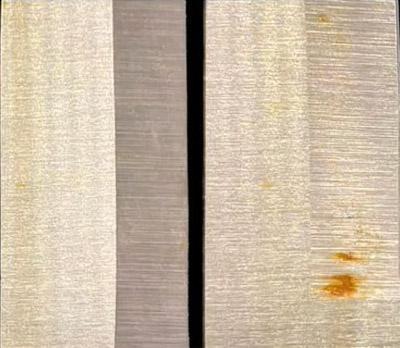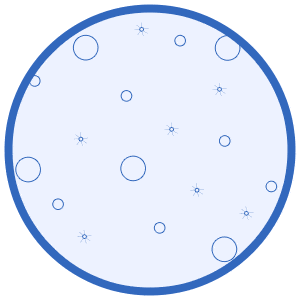Passivation of Stainless Steel
Stainless steel is a popular material in many industries due to its corrosion resistance and durability. However, despite its name, stainless steel can still corrode under certain conditions. This is where passivation comes in. Passivation is the process of treating stainless steel to enhance its corrosion resistance by forming a thin oxide layer on the surface.
Passivation is the process of treating stainless steel with an acid solution to remove free iron and other surface contaminants. The acid solution used is typically a dilute nitric acid or citric acid. The acid reacts with the surface of the stainless steel to remove any impurities and promote the formation of a passive oxide layer on the surface. This layer is typically only a few atoms thick and provides a barrier to protect the stainless steel from further corrosion.
Importance of Passivation of Stainless Steel
Corrosion Resistance: Stainless steel is often used in harsh environments, where it may be exposed to corrosive substances such as acids, salts, and water. The passive oxide layer formed during passivation provides an additional layer of protection to the stainless steel, enhancing its corrosion resistance and prolonging its lifespan.
Aesthetic Appeal: Passivation of stainless steel can also improve the aesthetic appeal of the material. After fabrication, stainless steel can sometimes have a dull or uneven appearance due to the presence of surface contaminants. Passivation can remove these contaminants, resulting in a smooth, bright, and uniform surface finish that is more visually appealing.
Regulatory Compliance: In some industries, passivation of stainless steel is required by regulatory bodies. For example, in the food and pharmaceutical industries, passivation is necessary to ensure that stainless steel equipment does not contaminate the products being manufactured. Passivation is also required in the aerospace and medical device industries to prevent corrosion and ensure the safety and reliability of the products being produced.
Cost Savings: Passivation can also provide cost savings over the long term by extending the lifespan of stainless steel components. By enhancing the corrosion resistance of stainless steel, passivation can reduce the need for repairs and replacements, leading to lower maintenance and replacement costs over time.
How to Passivate Stainless Steel
The first step in passivating stainless steel is to clean the components thoroughly. This is important because any dirt, grease, or oils on the surface can interfere with the passivation process. Cleaning can be done using various methods, ultrasonic cleaning is the most popular and effective, using an alkaline solution. Alkaline cleaning is done using an alkaline solution to neutralise any acidic contaminants.
After cleaning the components, the next step is to passivate the stainless steel. Passivation involves immersing the components in an acid bath, typically nitric or citric acid. The acid removes any remaining impurities on the surface and creates a protective oxide layer. The acid concentration, temperature, and immersion time vary depending on the specific passivation specification. Some passivation specifications require the addition of sodium dichromate to the nitric acid bath to speed up the formation of the oxide layer. However, sodium dichromate is a highly toxic hexavalent chromium compound and poses health and environmental risks. As an alternative, some passivation specifications recommend the use of citric acid and ultrasonic machines to encourage oxygen formation at the metal surface while still immersed in the acid bath. This combination of citric acid and ultrasonic is a safer and more environmentally friendly method.
After passivation, it is essential to test the components to ensure the effectiveness of the process. Testing involves measuring the corrosion resistance of the surface using various methods such as salt spray testing or potentiodynamic polarisation testing. The test results must meet the requirements of the specific passivation specification.

Passivation Machine for Stainless Steel
The Passivation Machine for Stainless Steel is a sophisticated system consisting of six to nine stages, which can be customised to meet the specific production requirements of each production line. Each stage is meticulously designed to perform a specific function, such as cleaning, rinsing, or passivating, with seamless integration to ensure a smooth and efficient flow of products through the line.
The machine features a critical component, i.e., the use of material 316, which offers superior corrosion resistance in comparison to the commonly used material 304. This ensures that the final products are safeguarded against environmental factors and maintain their optimal condition for an extended period. Another key feature of this passivation machine is its passivation bath control system. The system accurately monitors the nitric concentration and automatically adjusts the process, ensuring that the correct concentration is maintained throughout the passivation process. This guarantees consistency in quality, and the final products meet the highest standards.
The machine is further equipped with advanced batch reporting and data logging capabilities. These features facilitate the comprehensive tracking and analysis of each product batch, enabling valuable insights to improve the quality of the products and refine the production process. The machine is equipped with 21 CFR part 11 validation software, ensuring compliance with the stringent regulatory standards of the aerospace and medical industries. Thus, making it an ideal choice for use in these highly regulated fields.


Passivation Solution for Stainless Steel
The DECOMET passivation solution is a highly effective product specifically formulated to treat stainless steel components used in the medical equipment industry. It is composed of citric acid, a naturally occurring organic acid that is widely used in the food and pharmaceutical sectors, making it a safer and more sustainable option than the commonly used, corrosive nitric acid. DECOMET has been developed to remove contaminants, such as free iron oxide, from the surface of stainless steel components, leaving no trace after drying. This feature is of particular importance in the medical industry where cleanliness and sterility are of utmost concern. By utilizing DECOMET, medical equipment manufacturers can rest assured that their products meet the necessary standards for quality and safety.
Samples are evaluated free-of-charge & ultrasonic cleaner reports are issued covering all aspects of the process & the likely consumable costs involved.
We provide a complete technical support programme as part of our package. Our ultrasonic cleaning technical team are always on hand to offer advice and assistance.
With over 80 years of expertise, our experienced in-house technical support team can help you with your processes.



